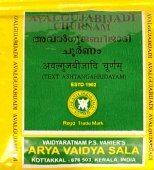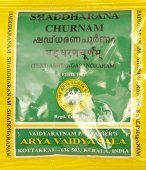Leprosy: 1 definition
Introduction:
Leprosy means something in the history of ancient India. If you want to know the exact meaning, history, etymology or English translation of this term then check out the descriptions on this page. Add your comment or reference to a book if you want to contribute to this summary article.
India history and geography
Source: Singhi Jain Series: Ratnaprabha-suri’s Kuvalayamala-katha (history)Leprosy was characteristic of Disabled Persons commonly found in the city of Mathurā at some point in time in ancient India, according to Uddyotanasūri in his 8th-century Kuvalayamālā (a Prakrit Campū, similar to Kāvya poetry).—The Kuvalayamala (779 A.D.) is full of cultural material which gains in value because of the firm date of its composition. [...] On page 55.11 f., there is a description of poor home (aṇāha-maṇḍava) in the city of Mathurā. In its population there was a sprinkling of disabled persons: [e.g., Leprosy (koḍḍhīe)] [...]. The invaders of the orphan home exchange their views as to which sin may be washed at which holy place. [...]

The history of India traces the identification of countries, villages, towns and other regions of India, as well as mythology, zoology, royal dynasties, rulers, tribes, local festivities and traditions and regional languages. Ancient India enjoyed religious freedom and encourages the path of Dharma, a concept common to Buddhism, Hinduism, and Jainism.
See also (Relevant definitions)
Starts with: Leprosy fruit, Leprosy gourd.
Full-text (+374): Kushtha, Mahavyadhi, Shvitra, Sidhma, Galitakushtha, Vyadhi, Shvaitrya, Kilasa, Tvagdosha, Picu, Kotha, Sidhman, Sidhmala, Carmadushika, Tamra, Kusta, Rakasa, Raktapiti, Galatkushtha, Kushtharoga.
Relevant text
Search found 114 books and stories containing Leprosy; (plurals include: Leprosies). You can also click to the full overview containing English textual excerpts. Below are direct links for the most relevant articles:
Atharvaveda and Charaka Samhita (by Laxmi Maji)
4b. Leprosy (Kuṣṭha) in the Caraka-saṃhitā < [Chapter 5 - Diseases and Remedies in Atharvaveda and Caraka-Saṃhitā]
4a. Kuṣṭha-roga (leprosy) in the Atharvaveda < [Chapter 5 - Diseases and Remedies in Atharvaveda and Caraka-Saṃhitā]
Treatment of Skin diseases (Carmaroga) and Leprosy (Kuṣṭha) < [Chapter 3 - Diseases and Remedial measures (described in Atharvaveda)]
Bhesajjakkhandhaka (Chapter on Medicine) (by Hin-tak Sik)
Dermatology (d): Miscellaneous Skin Lesions < [Chapter 5 - Diseases and Treatments in the Chapter on Medicine]
Dermatology (a): Itching Lesions < [Chapter 5 - Diseases and Treatments in the Chapter on Medicine]
Medical Principles (In Early Buddhist Scriptures) < [Chapter 3 - Concepts of Health and Disease]
Rasa Jala Nidhi, vol 3: Metals, Gems and other substances (by Bhudeb Mookerjee)
Part 2 - Semi-poison (2): Arka < [Chapter XXXI - Upavisha (semi-poisons)]
Part 5 - Taking of tin < [Chapter VI - Metals (6): Vanga (tin)]
Part 1 - Semi-poison (1): Snuhi < [Chapter XXXI - Upavisha (semi-poisons)]
The Padma Purana (by N.A. Deshpande)
Chapter 52 - Yoginī Ekādaśī < [Section 6 - Uttara-Khaṇḍa (Concluding Section)]
Chapter 148 - Mālārka-tīrtha < [Section 6 - Uttara-Khaṇḍa (Concluding Section)]
Chapter 48 - The Horse Is Relieved of Stiffness < [Section 5 - Pātāla-Khaṇḍa (Section on the Nether World)]
The Skanda Purana (by G. V. Tagare)
Chapter 76 - Installation of Muṇḍīra, Kālapriya and Mūlasthāna < [Section 1 - Tīrtha-māhātmya]
Chapter 41 - Luṃpeśvara (luṃpa-īśvara-liṅga) < [Section 2 - Caturaśīti-liṅga-māhātmya]
Chapter 10 - King Camatkāra Cursed < [Section 1 - Tīrtha-māhātmya]
Women in the Atharva-veda Samhita (by Pranab Jyoti Kalita)
6. Goddess Āsurī < [Chapter 4 - Female Deities and the Glorification of Women in the Atharvaveda]
5. Contents of the Atharvaveda < [Chapter 1 - The Atharvaveda and its importance in the Vedic Literature]
Related products
(+12 more products available)





